Effect of Wood Dust Fibre Treatments Reinforcement on the Properties of Recycled Polypropylene Composite (r-WoPPC) Filament for Fused Deposition Modelling (FDM)
Abstract
1. Introduction
2. Materials and Methods
2.1. Materials
2.2. Methods
2.2.1. Alkaline Treatment of Wood Dust Fibre
2.2.2. Silane Treatment of Wood Dust Fibre
2.2.3. NaOH-Silane Treatment of Wood Dust Fibre
2.3. Filament Preparation
2.3.1. Composite Mixture
2.3.2. r-WoPPC Filament Extrusion
2.3.3. Density Calculation
2.4. Testing
2.4.1. Water Absorption Test of the r-WoPPC Filaments
2.4.2. Wire Pull Test
2.4.3. Morphological Observations
2.4.4. The Fourier Transform Infrared Spectrometry (FTIR)
2.4.5. Thermogravimetric Analysis
2.4.6. Differential Scanning Calorimetry
3. Results and Discussion
3.1. Physical Properties of r-WoPPC Filaments
Filament Size and Colour
3.2. Water Absorption Test
3.3. Mechanical Properties of r-WoPPC Filament
3.4. Morphological Analysis
3.5. Fourier Infrared Spectrometry (FTIR)
3.6. Thermogravimetric Analysis (TGA)
3.7. Differential Scanning Calorimetry (DSC)
4. Conclusions
Author Contributions
Funding
Acknowledgments
Conflicts of Interest
References
- Asrofi, M.; Sapuan, S.M.; Ilyas, R.A.; Ramesh, M. Characteristic of composite bioplastics from tapioca starch and sugarcane bagasse fiber: Effect of time duration of ultrasonication (Bath-Type). Mater. Today Proc. 2020, 46, 1626–1630. [Google Scholar] [CrossRef]
- Ilyas, R.A.; Sapuan, S.M.; Harussani, M.M.; Hakimi, M.Y.A.Y.; Haziq, M.Z.M.; Atikah, M.S.N.; Asyraf, M.R.M.; Ishak, M.R.; Razman, M.R.; Nurazzi, N.M.; et al. Polylactic Acid (PLA) Biocomposite: Processing, Additive Manufacturing and Advanced Applications. Polymers 2021, 13, 1326. [Google Scholar] [CrossRef]
- Krishna, K.V.; Kanny, K. The effect of treatment on kenaf fiber using green approach and their reinforced epoxy composites. Compos. Part B Eng. 2016, 104, 111–117. [Google Scholar] [CrossRef]
- Beluns, S.; Gaidukovs, S.; Platnieks, O.; Gaidukova, G.; Mierina, I.; Grase, L.; Starkova, O.; Brazdausks, P.; Thakur, V.K. From Wood and Hemp Biomass Wastes to Sustainable Nanocellulose Foams. Ind. Crop. Prod. 2021, 170, 113780. [Google Scholar] [CrossRef]
- Norfarhana, A.S.; Ilyas, R.A.; Ngadi, N. A review of nanocellulose adsorptive membrane as multifunctional wastewater treatment. Carbohydr. Polym. 2022, 291, 119563. [Google Scholar] [CrossRef]
- Ilyas, R.A.; Zuhri, M.Y.M.; Norrrahim, M.N.F.; Misenan, M.S.M.; Jenol, M.A.; Samsudin, S.A.; Nurazzi, N.M.; Asyraf, M.R.M.; Supian, A.B.M.; Bangar, S.P.; et al. Natural Fiber-Reinforced Polycaprolactone Green and Hybrid Biocomposites for Various Advanced Applications. Polymers 2022, 14, 182. [Google Scholar] [CrossRef] [PubMed]
- Ilyas, R.A.; Aisyah, H.A.; Nordin, A.H.; Ngadi, N.; Zuhri, M.Y.M.; Asyraf, M.R.M.; Sapuan, S.M.; Zainudin, E.S.; Sharma, S.; Abral, H.; et al. Natural-Fiber-Reinforced Chitosan, Chitosan Blends and Their Nanocomposites for Various Advanced Applications. Polymers 2022, 14, 874. [Google Scholar] [CrossRef] [PubMed]
- Ilyas, R.A.; Zuhri, M.Y.M.; Aisyah, H.A.; Asyraf, M.R.M.; Hassan, S.A.; Zainudin, E.S.; Sapuan, S.M.; Sharma, S.; Bangar, S.P.; Jumaidin, R.; et al. Natural Fiber-Reinforced Polylactic Acid, Polylactic Acid Blends and Their Composites for Advanced Applications. Polymers 2022, 14, 202. [Google Scholar] [CrossRef] [PubMed]
- Suriani, M.J.; Ilyas, R.A.; Zuhri, M.Y.M.; Khalina, A.; Sultan, M.T.H.; Sapuan, S.M.; Ruzaidi, C.M.; Wan, F.N.; Zulkifli, F.; Harussani, M.M.; et al. Critical Review of Natural Fiber Reinforced Hybrid Composites: Processing, Properties, Applications and Cost. Polymers 2021, 13, 3514. [Google Scholar] [CrossRef] [PubMed]
- Mansor, M.R.; Taufiq, M.J.; Mustafa, Z.; Jumaidin, R.; Mastura, M.T.; Firdaus, H.M.S. Basori Thermal and mechanical behaviour of recycled polypropylene/polyethylene blends of rejected-unused disposable diapers. J. Adv. Manuf. Technol. 2019, 13, 13–23. [Google Scholar]
- Allaf, R.M.; Albarahmieh, E.; Futian, M. Preparation of Sawdust-Filled Recycled-PET Composites via Solid-State Compounding. Processes 2020, 8, 100. [Google Scholar] [CrossRef]
- Rozilah, A.; Jaafar, C.N.A.; Sapuan, S.M.; Zainol, I.; Ilyas, R.A. The Effects of Silver Nanoparticles Compositions on the Mechanical, Physiochemical, Antibacterial, and Morphology Properties of Sugar Palm Starch Biocomposites for Antibacterial Coating. Polymers 2020, 12, 2605. [Google Scholar] [CrossRef] [PubMed]
- Jumaidin, R.; Saidi, Z.A.S.; Ilyas, R.A.; Ahmad, M.N.; Wahid, M.K.; Yaakob, M.Y.; Maidin, N.A.; Rahman, M.H.A.; Osman, M.H. Characteristics of Cogon Grass Fibre Reinforced Thermoplastic Cassava Starch Biocomposite: Water Absorption and Physical Properties. J. Adv. Res. Fluid Mech. Therm. Sci. 2019, 62, 43–52. [Google Scholar]
- Radzi, A.M.; Zaki, S.A.; Hassan, M.Z.; Ilyas, R.A.; Jamaludin, K.R.; Daud, M.Y.M.; Aziz, S.A. Bamboo-Fiber-Reinforced Thermoset and Thermoplastic Polymer Composites: A Review of Properties, Fabrication, and Potential Applications. Polymers 2022, 14, 1387. [Google Scholar] [CrossRef]
- Ilyas, R.A.; Sapuan, S.M.; Ibrahim, R.; Abral, H.; Ishak, M.R.; Zainudin, E.S.; Asrofi, M.; Atikah, M.S.N.; Huzaifah, M.R.M.; Radzi, A.M.; et al. Sugar palm (Arenga pinnata (Wurmb.) Merr) cellulosic fibre hierarchy: A comprehensive approach from macro to nano scale. J. Mater. Res. Technol. 2019, 8, 2753–2766. [Google Scholar] [CrossRef]
- Ilyas, R.A.; Sapuan, S.M.; Ishak, M.R. Isolation and characterization of nanocrystalline cellulose from sugar palm fibres (Arenga Pinnata). Carbohydr. Polym. 2018, 181, 1038–1051. [Google Scholar] [CrossRef]
- Ilyas, R.A.; Sapuan, S.M.; Ishak, M.R.; Zainudin, E.S. Effect of delignification on the physical, thermal, chemical, and structural properties of sugar palm fibre. BioResources 2017, 12, 8734–8754. [Google Scholar] [CrossRef]
- Kamaruddin, Z.H.; Jumaidin, R.; Rushdan, A.I.; Selamat, M.Z.; Alamjuri, R.H. Characterization of Natural Cellulosic Fiber Isolated from Malaysian Cymbopogan citratus Leaves. BioResources 2021, 16, 7729–7750. [Google Scholar] [CrossRef]
- Kamaruddin, Z.H.; Jumaidin, R.; Selamat, M.Z.; Ilyas, R.A. Characteristics and Properties of Lemongrass (Cymbopogan Citratus): A Comprehensive Review. J. Nat. Fibers 2021, 19, 8101–8118. [Google Scholar] [CrossRef]
- Nurazzi, N.M.; Khalina, A.; Chandrasekar, M.; Aisyah, H.A.; Rafiqah, S.A.; Ilyas, R.A.; Hanafee, Z.M. Effect of fiber orientation and fiber loading on the mechanical and thermal properties of sugar palm yarn fiber reinforced unsaturated polyester resin composites. Polimery 2020, 65, 115–124. [Google Scholar] [CrossRef]
- Gholampour, A.; Ozbakkaloglu, T. A review of natural fiber composites: Properties, modification and processing techniques, characterization, applications. J. Mater. Sci. 2020, 55, 829–892. [Google Scholar] [CrossRef]
- Suriani, M.J.; Rapi, H.Z.; Ilyas, R.A.; Petrů, M.; Sapuan, S.M. Delamination and Manufacturing Defects in Natural Fiber-Reinforced Hybrid Composite: A Review. Polymers 2021, 13, 1323. [Google Scholar] [CrossRef]
- Asyraf, M.R.M.; Ishak, M.R.; Syamsir, A.; Nurazzi, N.M.; Sabaruddin, F.A.; Shazleen, S.S.; Norrrahim, M.N.F.; Rafidah, M.; Ilyas, R.A.; Rashid, M.Z.A.; et al. Mechanical properties of oil palm fibre-reinforced polymer composites: A review. J. Mater. Res. Technol. 2022, 17, 33–65. [Google Scholar] [CrossRef]
- Tarique, J.; Sapuan, S.M.; Khalina, A.; Sherwani, S.F.K.; Yusuf, J.; Ilyas, R.A. Recent developments in sustainable arrowroot (Maranta arundinacea Linn) starch biopolymers, fibres, biopolymer composites and their potential industrial applications: A review. J. Mater. Res. Technol. 2021, 13, 1191–1219. [Google Scholar] [CrossRef]
- Asyraf, M.R.M.; Ishak, M.R.; Norrrahim, M.N.F.; Nurazzi, N.M.; Shazleen, S.S.; Ilyas, R.A.; Rafidah, M.; Razman, M.R. Recent advances of thermal properties of sugar palm lignocellulosic fibre reinforced polymer composites. Int. J. Biol. Macromol. 2021, 193, 1587–1599. [Google Scholar] [CrossRef]
- Aida, H.J.; Nadlene, R.; Mastura, M.T.; Yusriah, L.; Sivakumar, D.; Ilyas, R.A. Natural fibre filament for Fused Deposition Modelling (FDM): A review. Int. J. Sustain. Eng. 2021, 14, 1988–2008. [Google Scholar] [CrossRef]
- Corradi, M.; Vo, T.P.; Poologanathan, K.; Osofero, A.I. Flexural behaviour of hardwood and softwood beams with mechanically connected GFRP plates. Compos. Struct. 2018, 206, 610–620. [Google Scholar] [CrossRef]
- Mishra, V.R. Utilization of waste saw dust in development of epoxy resin hybrid green composite. Mater. Today Proc. 2019, 25, 799–803. [Google Scholar] [CrossRef]
- Sanjay, M.R.; Madhu, P.; Jawaid, M.; Senthamaraikannan, P.; Senthil, S.; Pradeep, S. Characterization and properties of natural fiber polymer composites: A comprehensive review. J. Clean. Prod. 2018, 172, 566–581. [Google Scholar] [CrossRef]
- Syduzzaman, M.; Faruque, M.A.; Al Bilisik, K.; Naebe, M. Plant-based natural fibre reinforced composites: A review on fabrication, properties and applications. Coatings 2020, 10, 973. [Google Scholar] [CrossRef]
- Jumaidin, R.; Sapuan, S.M.; Jawaid, M.; Ishak, M.R.; Sahari, J. Thermal, mechanical, and physical properties of seaweed/sugar palm fibre reinforced thermoplastic sugar palm Starch/Agar hybrid composites. Int. J. Biol. Macromol. 2017, 97, 606–615. [Google Scholar] [CrossRef]
- Basransyah; Putra, A.M.; Iman Darmawan, M. Application of Pyrolysis Technology as an Effort to Reduce Plastic Waste. J. Phys. Conf. Ser. 2020, 1539, 012068. [Google Scholar] [CrossRef]
- Nuzaimah, M.; Sapuan, S.M.; Nadlene, R.; Jawaid, M. Sodium hydroxide treatment ofwaste rubber crumb and its effects on properties of unsaturated polyester composites. Appl. Sci. 2020, 10, 3913. [Google Scholar] [CrossRef]
- Sreenivasan, D.P.; Sujith, A.; Rajesh, C. Cure characteristics and mechanical properties of biocomposites of natural rubber reinforced with chicken feather fibre: Effect of fibre loading, alkali treatment, bonding and vulcanizing systems. Mater. Today Commun. 2019, 20, 100555. [Google Scholar] [CrossRef]
- Kumar, R.; Kumar, K.; Bhowmik, S. Mechanical characterization and quantification of tensile, fracture and viscoelastic characteristics of wood filler reinforced epoxy composite. Wood Sci. Technol. 2018, 52, 677–699. [Google Scholar] [CrossRef]
- Haryati, A.; Razali, N.; Petrů, M.; Taha, M.; Muhammad, N.; Ilyas, R.A. Effect of Chemically Treated Kenaf Fibre on Mechanical and Thermal Properties of PLA Composites Prepared through Fused Deposition Modeling (FDM). Polymers 2021, 13, 3299. [Google Scholar] [CrossRef]
- Nasir, M.H.M.; Taha, M.M.; Razali, N.; Ilyas, R.A.; Knight, V.F.; Norrrahim, M.N.F. Effect of Chemical Treatment of Sugar Palm Fibre on Rheological and Thermal Properties of the PLA Composites Filament for FDM 3D Printing. Materials 2022, 15, 8082. [Google Scholar] [CrossRef]
- Nadlene, R.; Sapuan, S.M.; Jawaid, M.; Ishak, M.R.; Yusriah, L. The effects of chemical treatment on the structural and thermal, physical, and mechanical and morphological properties of roselle fiber-reinforced vinyl ester composites. Polym. Compos. 2018, 39, 274–287. [Google Scholar] [CrossRef]
- Petchwattana, N.; Channuan, W.; Naknaen, P.; Narupai, B. 3D printing filaments prepared from modified poly(lactic acid)/teak wood flour composites: An investigation on the particle size effects and silane coupling agent compatibilisation. J. Phys. Sci. 2019, 30, 169–188. [Google Scholar] [CrossRef]
- Kallakas, H.; Martin, M.; Goljandin, D.; Poltimäe, T.; Krumme, A.; Kers, J. Mechanical and physical properties of thermally modified wood flour reinforced polypropylene composites. Agron. Res. 2016, 14, 994–1003. [Google Scholar]
- Nasereddin, J.M.; Wellner, N.; Alhijjaj, M.; Belton, P.; Qi, S. Development of a Simple Mechanical Screening Method for Predicting the Feedability of a Pharmaceutical FDM 3D Printing Filament. Pharm. Res. 2018, 35, 151. [Google Scholar] [CrossRef]
- Das, A.K.; Agar, D.A.; Rudolfsson, M.; Larsson, S.H. A review on wood powders in 3D printing: Processes, properties and potential applications. J. Mater. Res. Technol. 2021, 15, 241–255. [Google Scholar] [CrossRef]
- Fiore, V.; Orlando, V.; Sanfilippo, C.; Badagliacco, D.; Valenza, A. Effect of silane coupling treatment on the adhesion between polyamide and epoxy based composites reinforced with carbon fibers. Fibers 2020, 8, 48. [Google Scholar] [CrossRef]
- Wirawan, W.A. Surface Modification with Silane Coupling Agent on Tensile Properties of Natural Fiber Composite. J. Energy Mech. Mater. Manuf. Eng. 2017, 2, 98–103. [Google Scholar] [CrossRef]
- De Buyl, F. Organo-Functional Silanes Are Molecules Carrying Two Different Reactive Groups on Their Silicon Atom So That They Can React and Couple with Very Different Materials (e.g., Inorgani). 2014. Available online: https://www.researchgate.net/publication/242531478_Organo-functional_silanes_are_molecules_carrying_two_different_reactive_groups_on_their_silicon_atom_so_that_they_can_react_and_couple_with_very_different_materials_eg_inorganic (accessed on 7 November 2022).
- Organofunctional Silanes. What They Are, How They Work, and Where to Use Them. Available online: https://www.garzantispecialties.com/en/organofunctional-silanes/ (accessed on 7 November 2022).
- Raharjo, W.W.; Soenoko, R.; Irawan, Y.S.; Suprapto, A. The Influence of Chemical Treatments on Cantala Fiber Properties and Interfacial Bonding of Cantala Fiber/Recycled High Density Polyethylene (rHDPE). J. Nat. fibers 2018, 15, 98–111. [Google Scholar] [CrossRef]
- Ferreira, I.; Vale, D.; Machado, M.; Lino, J. Additive manufacturing of polyethylene terephthalate glycol/carbon fiber composites: An experimental study from filament to printed parts. Proc. Inst. Mech. Eng. Part L J. Mater. Des. Appl. 2019, 233, 1866–1878. [Google Scholar] [CrossRef]
- Omar, N.W.Y.; Shuaib, N.A.; Hadi, M.H.J.A.; Azmi, A.I.; Misbah, M.N. Mechanical and physical properties of recycled-carbon-fiber-reinforced polylactide fused deposition modelling filament. Materials 2022, 15, 190. [Google Scholar] [CrossRef]
- Siddique, R.; Singh, M.; Mehta, S.; Belarbi, R. Utilization of treated saw dust in concrete as partial replacement of natural sand. J. Clean. Prod. 2020, 261, 121226. [Google Scholar] [CrossRef]
- Colin Hindle Polypropylene (PP). Available online: https://www.bpf.co.uk/plastipedia/polymers/PP.aspx (accessed on 7 November 2022).
- Sekar, V.; Zarrouq, M. Development and Characterization of Oil Palm Empty Fruit Bunch Fibre Reinforced Polylactic Acid Filaments for Fused Deposition Modeling. J. Mech. Eng. 2021, 18, 89–107. [Google Scholar] [CrossRef]
- Ren, Z.; Wang, C.; Zuo, Q.; Yousfani, S.H.S.; Anuar, N.I.S.; Zakaria, S.; Liu, X. Effect of alkali treatment on interfacial and mechanical properties of kenaf fibre reinforced epoxy unidirectional composites. Sains Malays. 2019, 48, 173–181. [Google Scholar] [CrossRef]
- Wang, W.; Guo, X.; Zhao, D.; Liu, L.; Zhang, R.; Yu, J. Water absorption and hygrothermal aging behavior of wood-polypropylene composites. Polymers 2020, 12, 782. [Google Scholar] [CrossRef]
- Chaudemanche, S.; Perrot, A.; Pimbert, S.; Lecompte, T.; Faure, F. Properties of an industrial extruded HDPE-WPC: The effect of the size distribution of wood flour particles. Constr. Build. Mater. 2018, 162, 543–552. [Google Scholar] [CrossRef]
- Demjén, Z.; Pukánszky, B.; Nagy, J. Possible coupling reactions of functional silanes and polypropylene. Polymer 1999, 40, 1763–1773. [Google Scholar] [CrossRef]
- Kavya, H.M.; Bavan, S.; Yogesha, B.; Sanjay, M.R.; Siengchin, S.; Gorbatyuk, S. Effect of coir fiber and inorganic filler on physical and mechanical properties of epoxy based hybrid composites. Polym. Compos. 2021, 42, 3911–3921. [Google Scholar] [CrossRef]
- Turku, I.; Keskisaari, A.; Kärki, T.; Puurtinen, A.; Marttila, P. Characterization of wood plastic composites manufactured from recycled plastic blends. Compos. Struct. 2017, 161, 469–476. [Google Scholar] [CrossRef]
- Jayanth, N.; Senthil, P.; Prakash, C. Effect of chemical treatment on tensile strength and surface roughness of 3D-printed ABS using the FDM process. Virtual Phys. Prototyp. 2018, 13, 155–163. [Google Scholar] [CrossRef]
- Huang, Y.; Löschke, S.; Proust, G. In the mix: The effect of wood composition on the 3D printability and mechanical performance of wood-plastic composites. Compos. Part C Open Access 2021, 5, 100140. [Google Scholar] [CrossRef]
- Goutham, R.; Veena, T.R.; Babagowda; Prasad, K.R.S. Study on mechanical properties of recycled Acrylonitrile Butadiene Styrene (ABS) blended with virgin Acrylonitrile Butadiene Styrene (ABS) using Taguchi method. Mater. Today Proc. 2018, 5, 24836–24845. [Google Scholar] [CrossRef]
- Ferede, E. Evaluation of Mechanical and Water Absorption Properties of Alkaline-Treated Sawdust-Reinforced Polypropylene Composite. J. Eng. 2020, 2020, 3706176. [Google Scholar] [CrossRef]
- Xie, Y.; Hill, C.A.S.; Xiao, Z.; Militz, H.; Mai, C. Silane coupling agents used for natural fiber/polymer composites: A review. Compos. Part A Appl. Sci. Manuf. 2010, 41, 806–819. [Google Scholar] [CrossRef]
- Tran, T.P.T.; Bénézet, J.C.; Bergeret, A. Rice and Einkorn wheat husks reinforced poly(lactic acid) (PLA) biocomposites: Effects of alkaline and silane surface treatments of husks. Ind. Crop. Prod. 2014, 58, 111–124. [Google Scholar] [CrossRef]
- Gesteinslabor Dr. Eberhard Jahns e.K. X-ray Diffraction (XRD) and Fourier Transform Infrared (FTIR) Spectroscopy. Available online: https://www.gesteinslabor.de/en/xrd-and-ftir.html (accessed on 7 November 2022).
- Ahmed, M.A.; Choi, J.W. Characteristic features of lignin extracted with gamma valerolactone after anaerobic and sonication only treatments of pine saw dust to make thin film composites. Bioresour. Technol. Rep. 2021, 15, 100814. [Google Scholar] [CrossRef]
- Montalvo Navarrete, J.I.; Hidalgo-Salazar, M.A.; Escobar Nunez, E.; Rojas Arciniegas, A.J. Thermal and mechanical behavior of biocomposites using additive manufacturing. Int. J. Interact. Des. Manuf. 2018, 12, 449–458. [Google Scholar] [CrossRef]
- Asim, M.; Jawaid, M.; Abdan, K.; Ishak, M.R. Effect of Alkali and Silane Treatments on Mechanical and Fibre-matrix Bond Strength of Kenaf and Pineapple Leaf Fibres. J. Bionic Eng. 2016, 13, 426–435. [Google Scholar] [CrossRef]
- Kumar, N.; Grewal, J.S.; Singh, T.; Kumar, N. Mechanical and thermal properties of chemically treated Kenaf natural fiber reinforced polymer composites. Mater. Today Proc. 2021. [Google Scholar] [CrossRef]
- Animpong, M.A.B.; Oduro, W.O.; Koranteng, J.; Ampomah-Benefo, K.; Boafo-Mensah, G.; Akufo-Kumi, K.; Tottimeh, G.O.; Amoah, J.Y. Coupling effect of waste automotive engine oil in the preparation of wood reinforced LDPE plastic composites for panels. S. Afr. J. Chem. Eng. 2017, 24, 55–61. [Google Scholar] [CrossRef]
- Tao, Y.; Wang, H.; Li, Z.; Li, P.; Shi, S.Q. Development and application ofwood flour-filled polylactic acid composite filament for 3d printing. Materials 2017, 10, 339. [Google Scholar] [CrossRef]
- Ilyas, R.A.; Sapuan, S.M.; Ishak, M.R.; Zainudin, E.S. Sugar palm nanofibrillated cellulose (Arenga pinnata (Wurmb.) Merr): Effect of cycles on their yield, physic-chemical, morphological and thermal behavior. Int. J. Biol. Macromol. 2019, 123, 379–388. [Google Scholar] [CrossRef] [PubMed]
- Nurazzi, N.M.; Asyraf, M.R.M.; Rayung, M.; Norrrahim, M.N.F.; Shazleen, S.S.; Rani, M.S.A.; Shafi, A.R.; Aisyah, H.A.; Radzi, M.H.M.; Sabaruddin, F.A.; et al. Thermogravimetric Analysis Properties of Cellulosic Natural Fiber Polymer Composites: A Review on Influence of Chemical Treatments. Polymers 2021, 13, 2710. [Google Scholar] [CrossRef]
- Antoniac, I.; Popescu, D.; Zapciu, A.; Antoniac, A.; Miculescu, F.; Moldovan, H. Magnesium filled polylactic acid (PLA) material for filament based 3D printing. Materials 2019, 12, 719. [Google Scholar] [CrossRef]
- Chung, H.J.; Lee, E.J.; Lim, S.T. Comparison in glass transition and enthalpy relaxation between native and gelatinized rice starches. Carbohydr. Polym. 2002, 48, 287–298. [Google Scholar] [CrossRef]
- Lamm, M.E.; Wang, L.; Kishore, V.; Tekinalp, H.; Kunc, V.; Wang, J.; Gardner, D.J.; Ozcan, S. Material extrusion additive manufacturing of wood and lignocellulosic filled composites. Polymers 2020, 12, 2115. [Google Scholar] [CrossRef] [PubMed]
- Girdis, J.; Gaudion, L.; Proust, G.; Löschke, S.; Dong, A. Rethinking Timber: Investigation into the Use of Waste Macadamia Nut Shells for Additive Manufacturing. JOM 2017, 69, 575–579. [Google Scholar] [CrossRef]
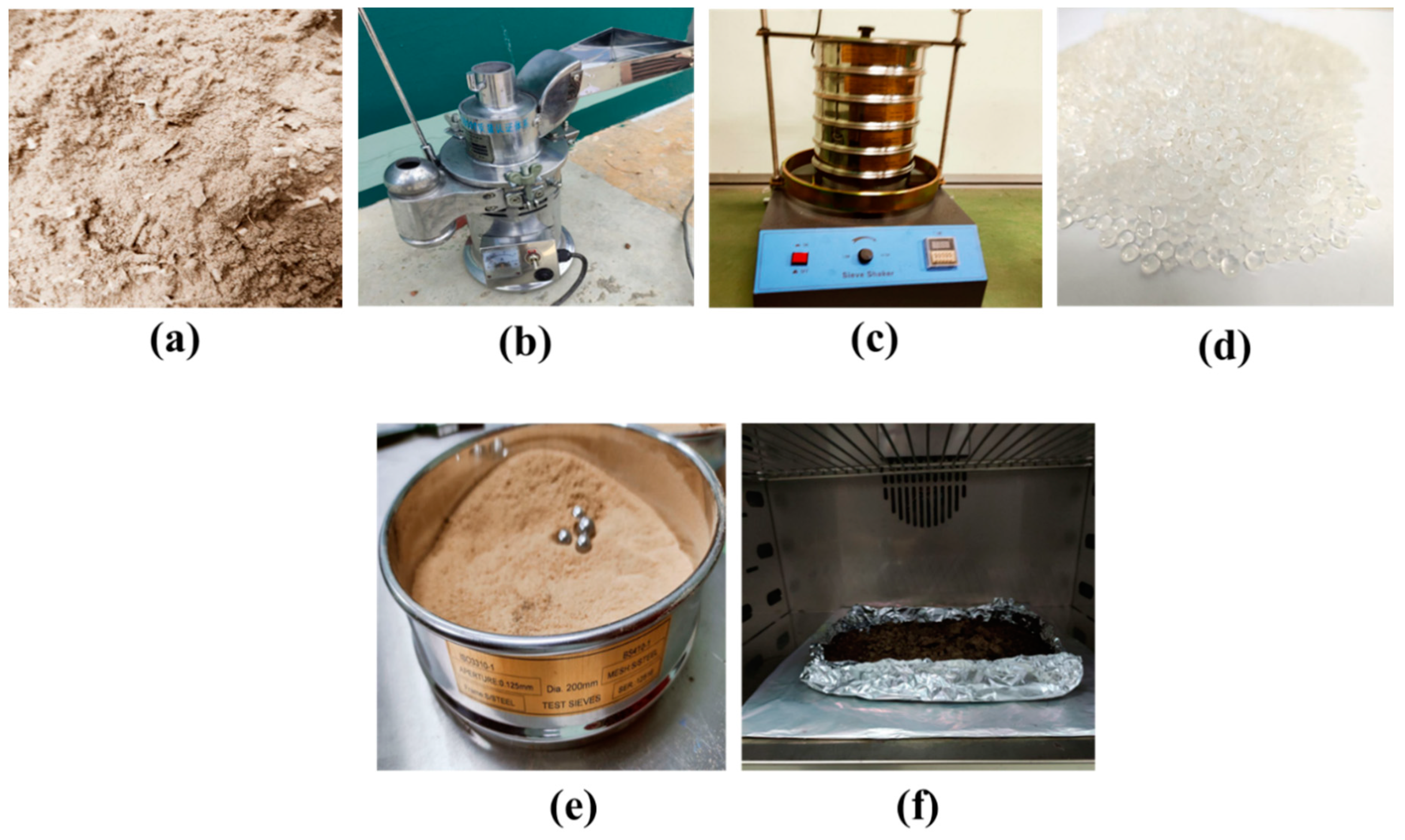
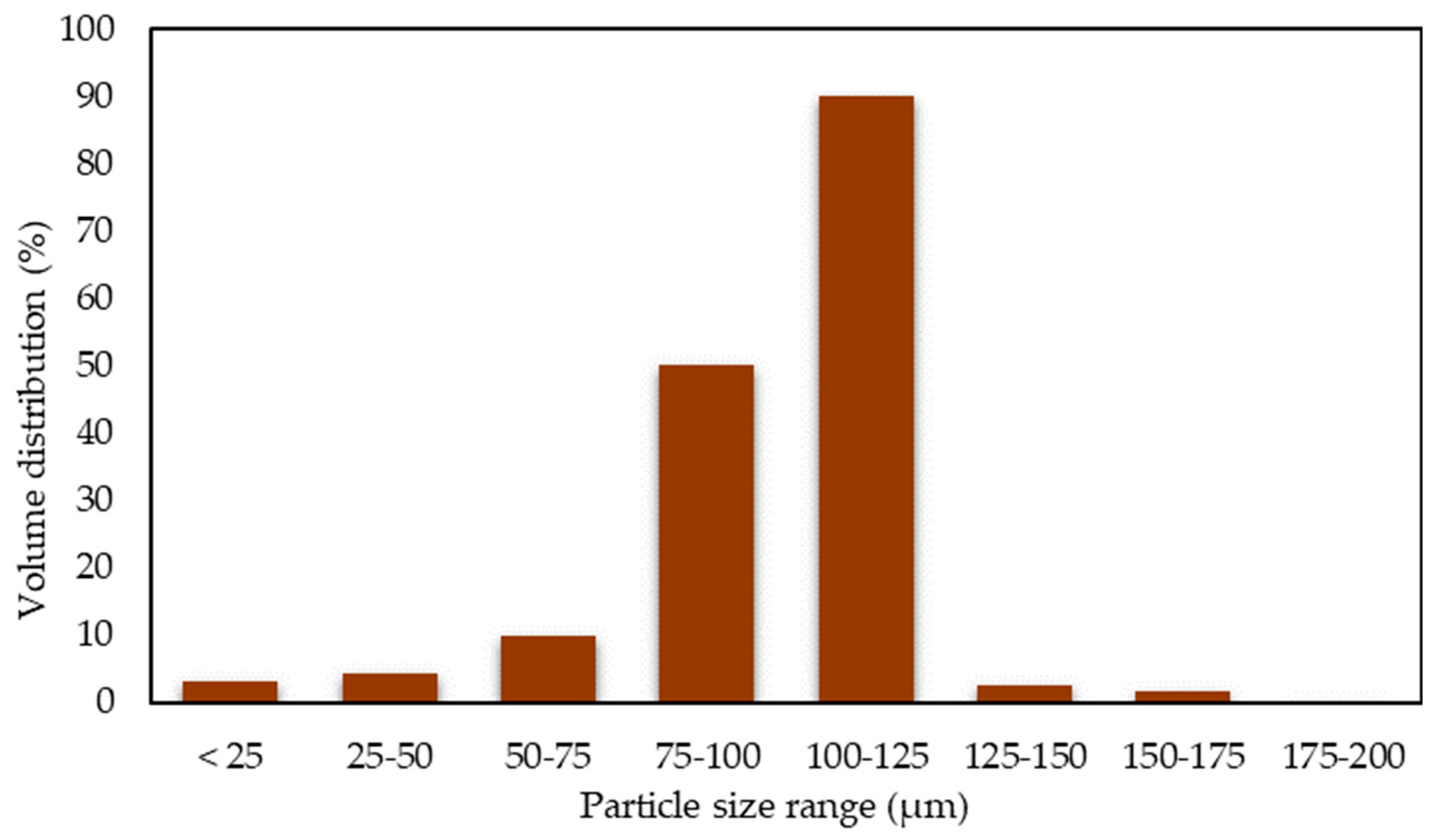
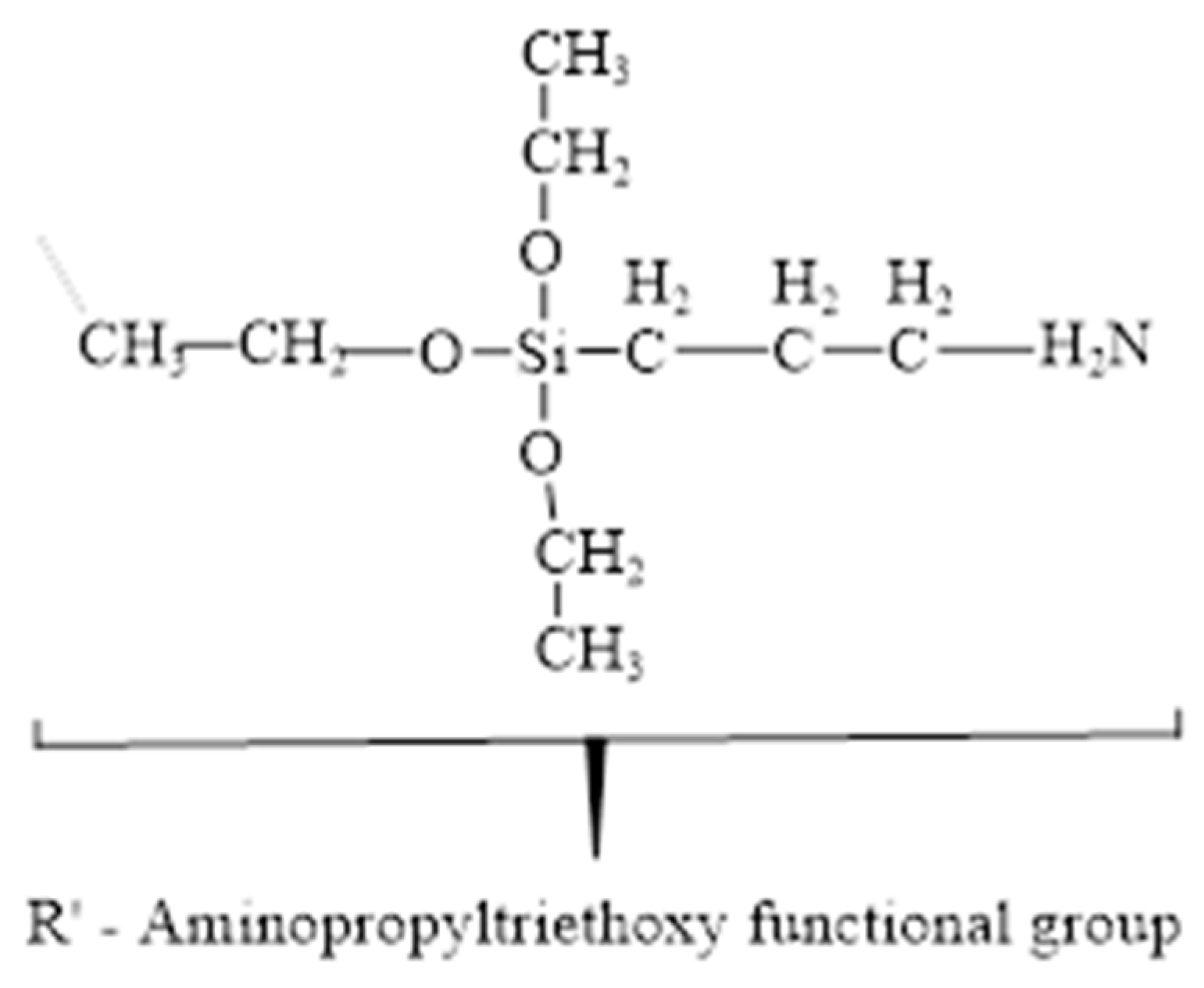
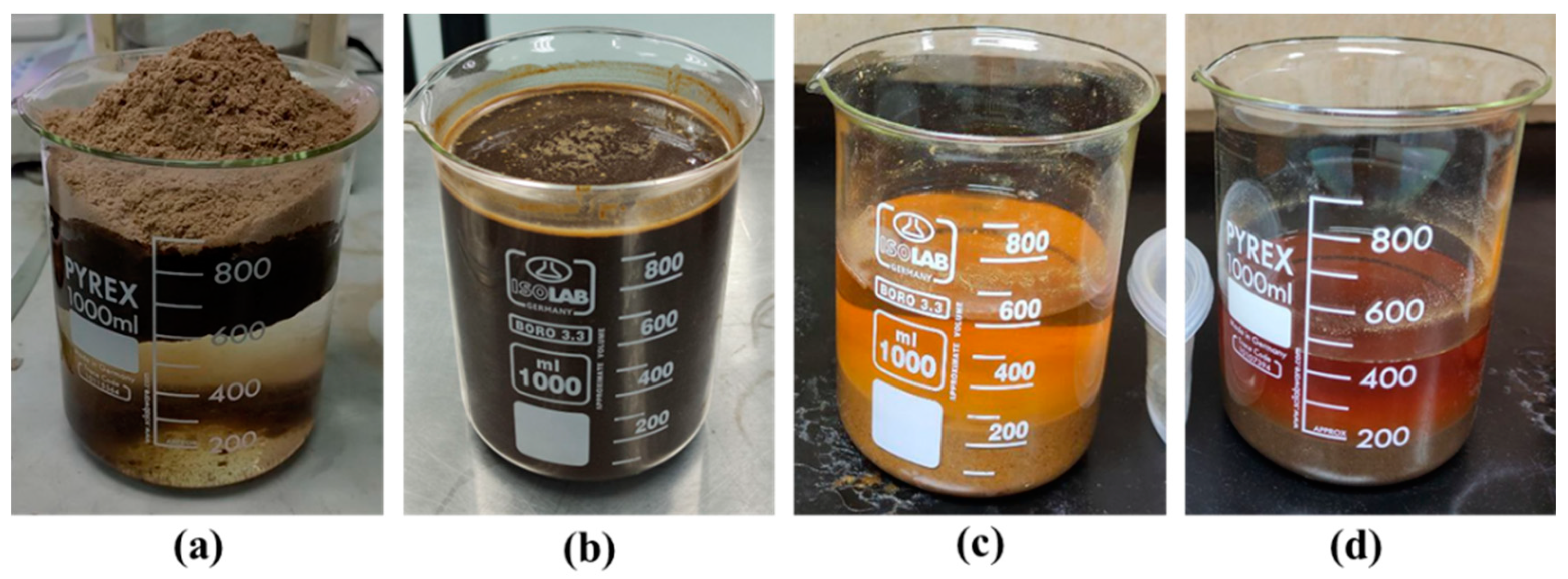
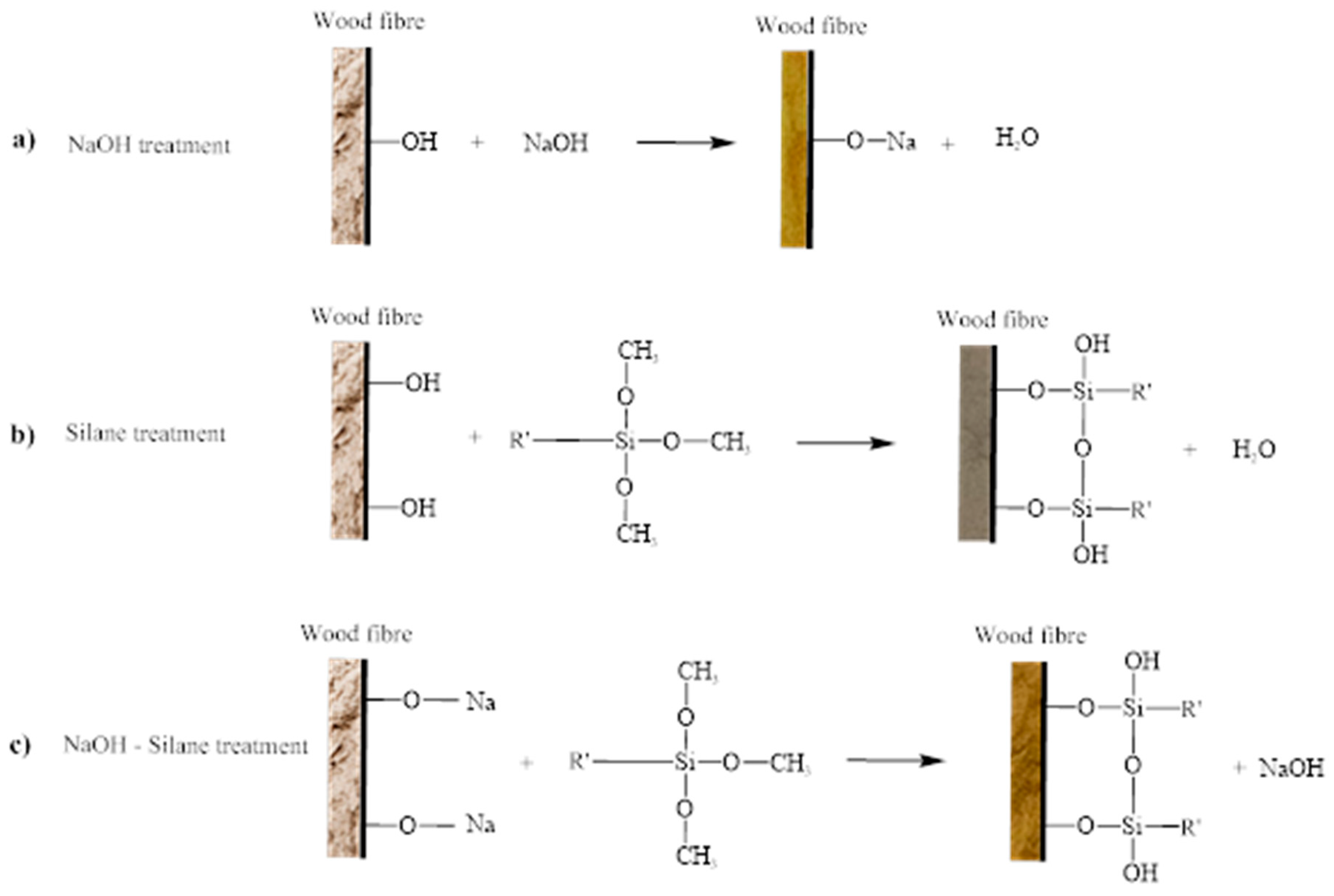
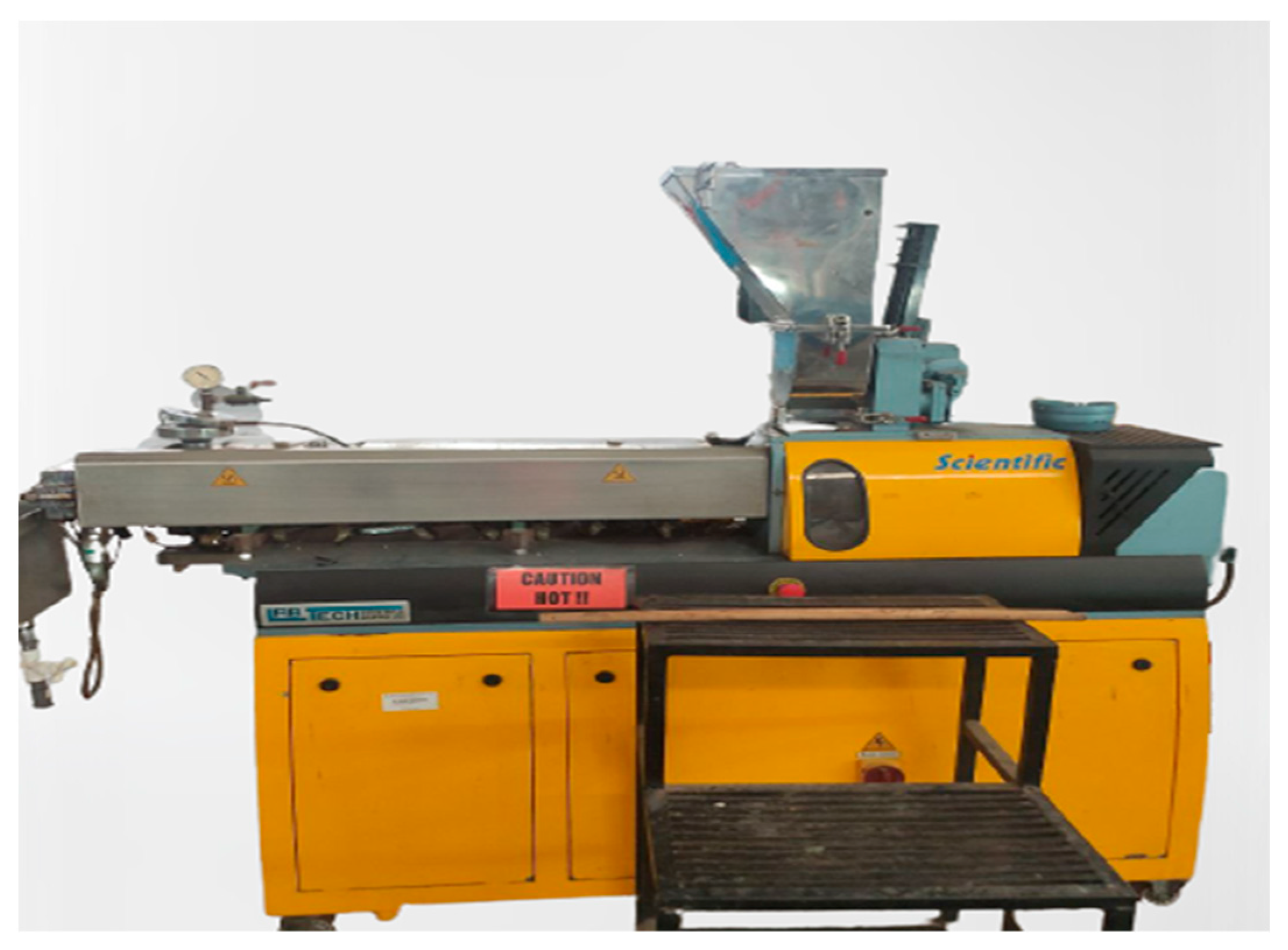
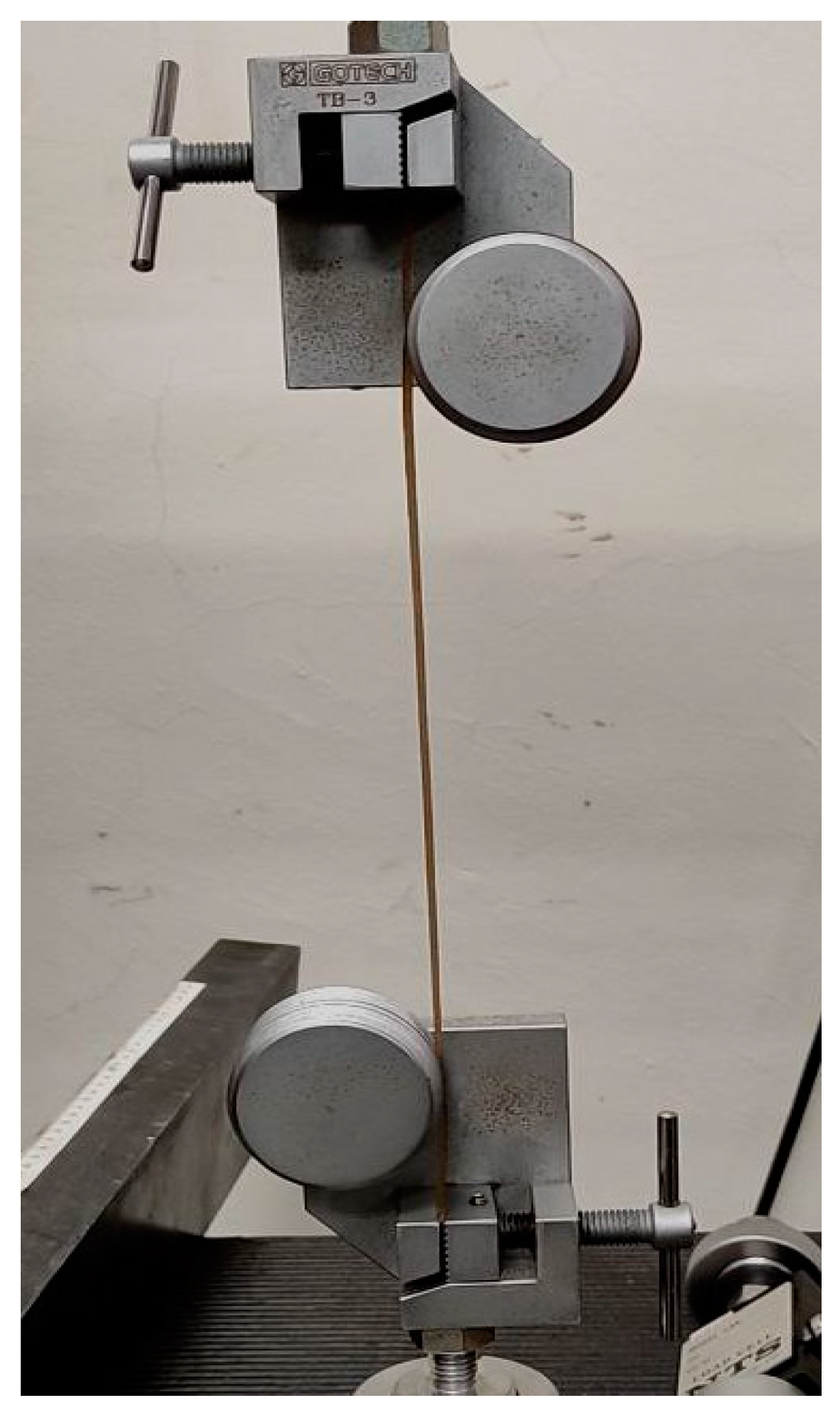


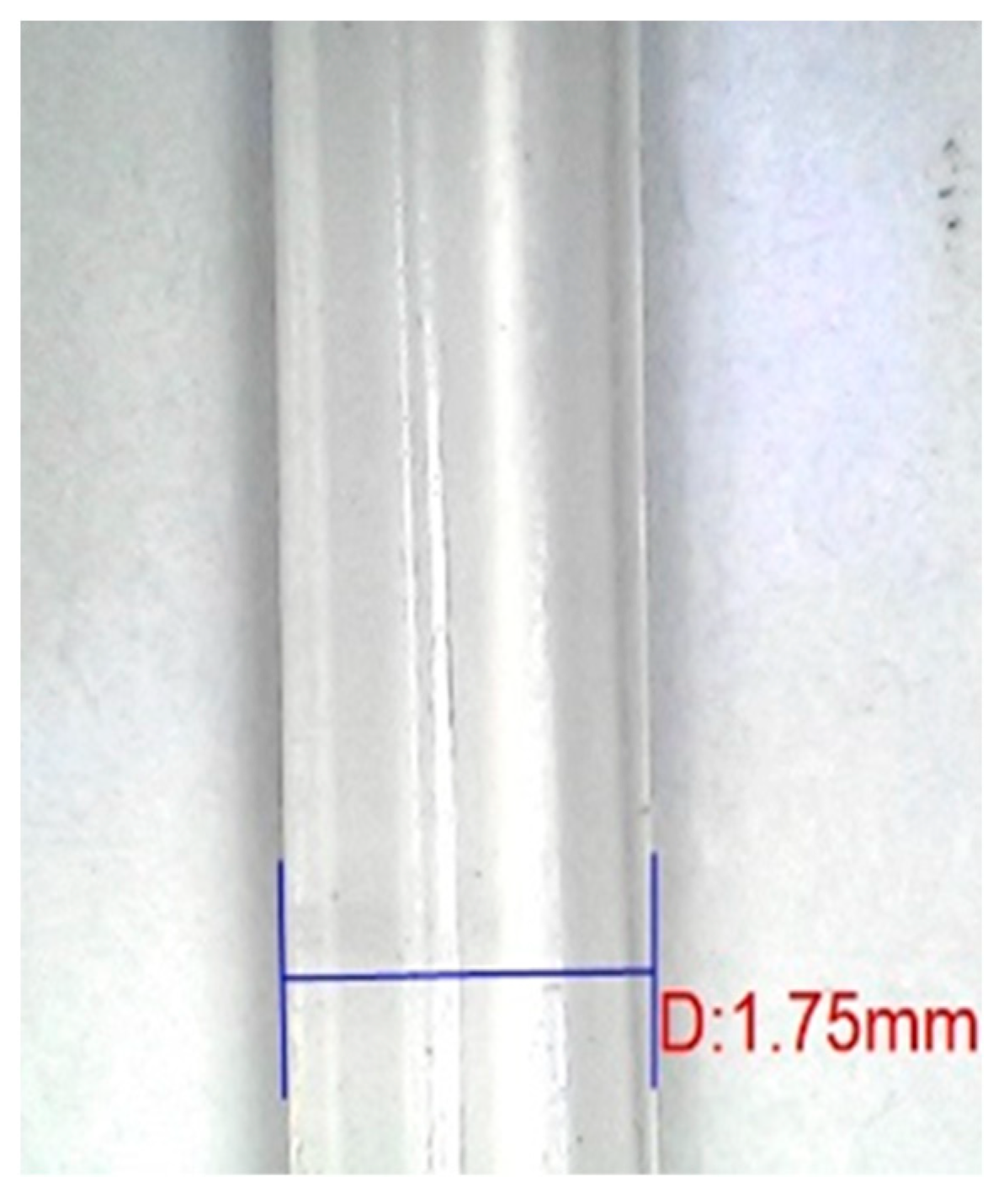

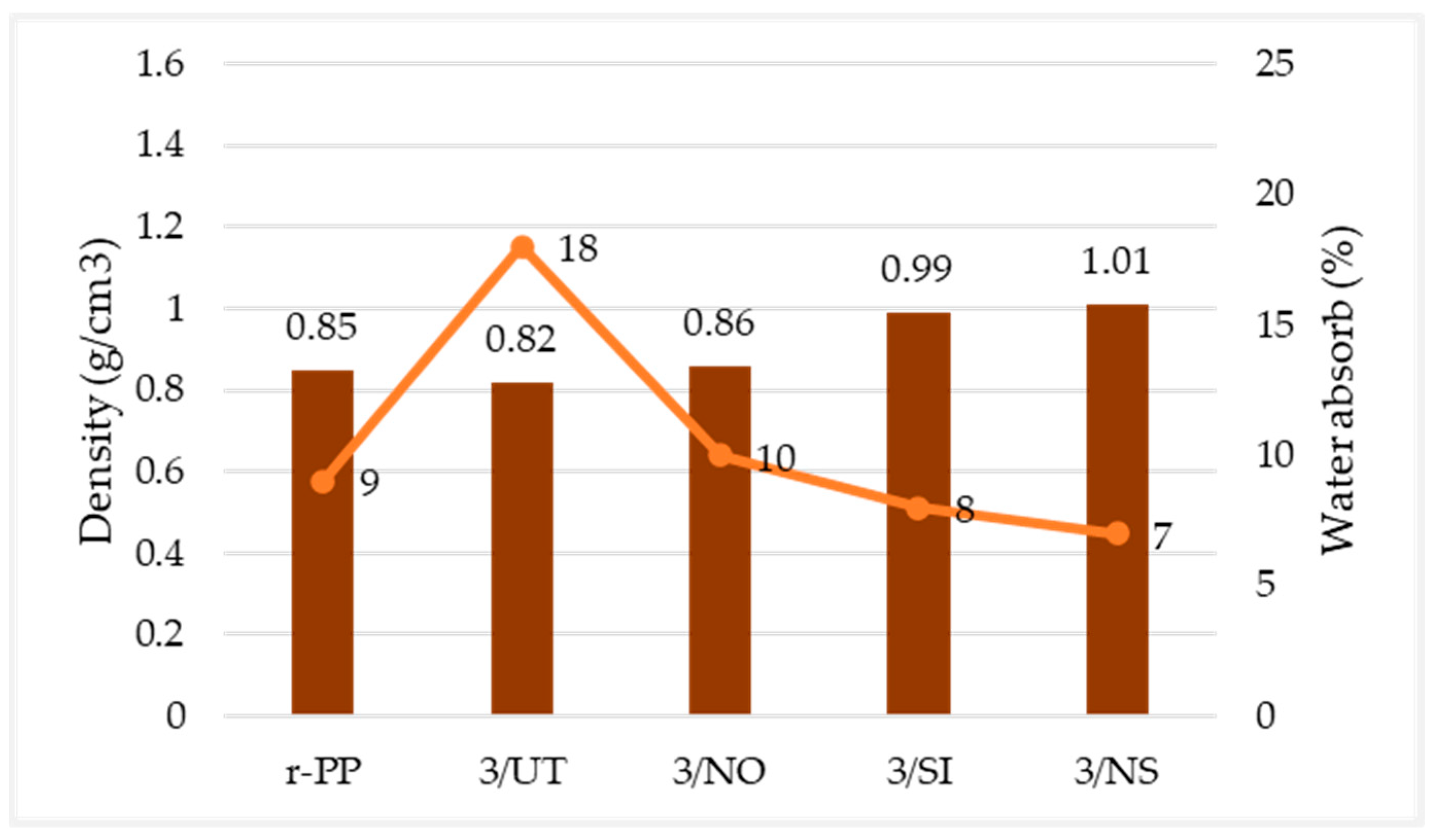

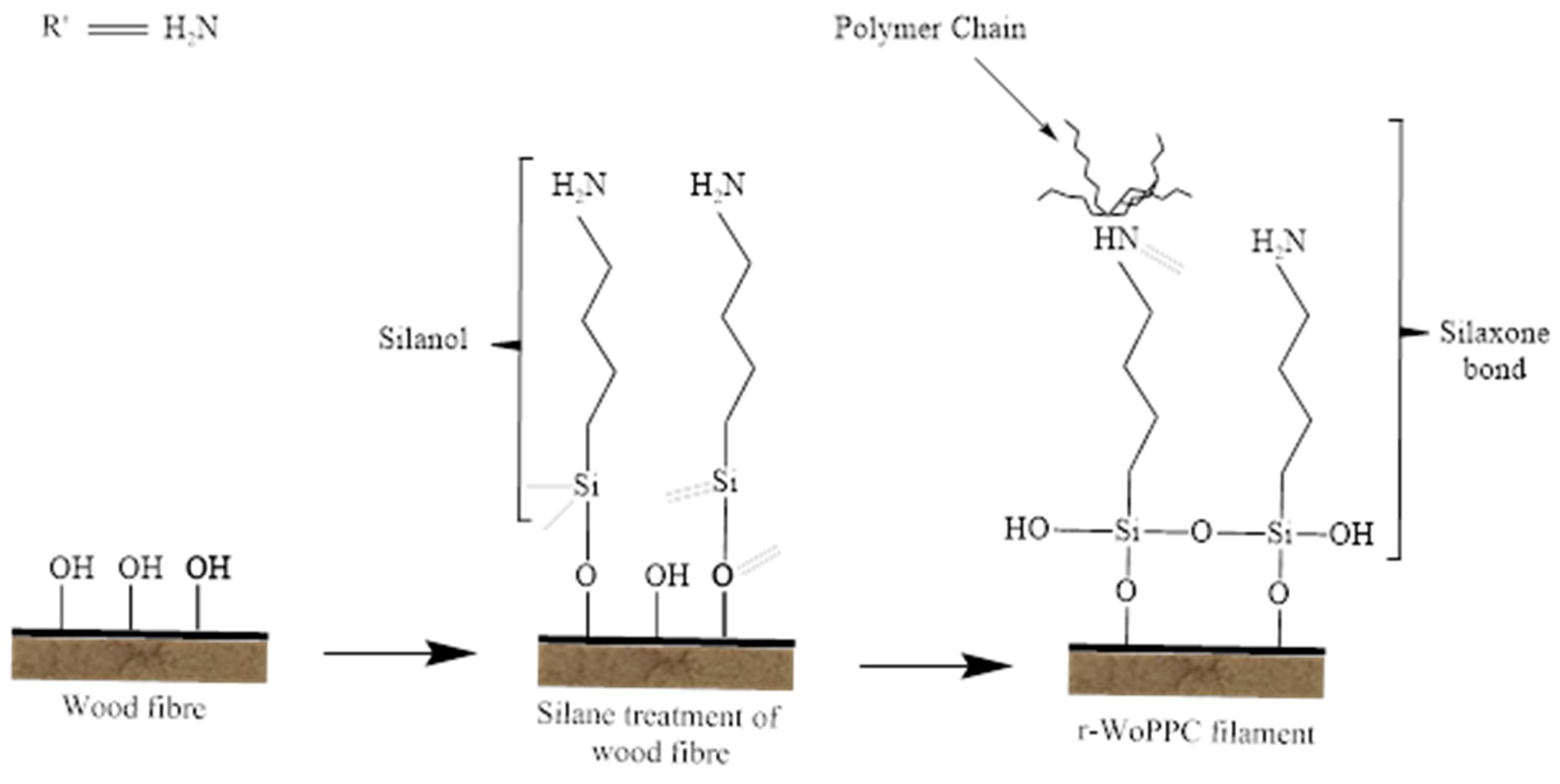

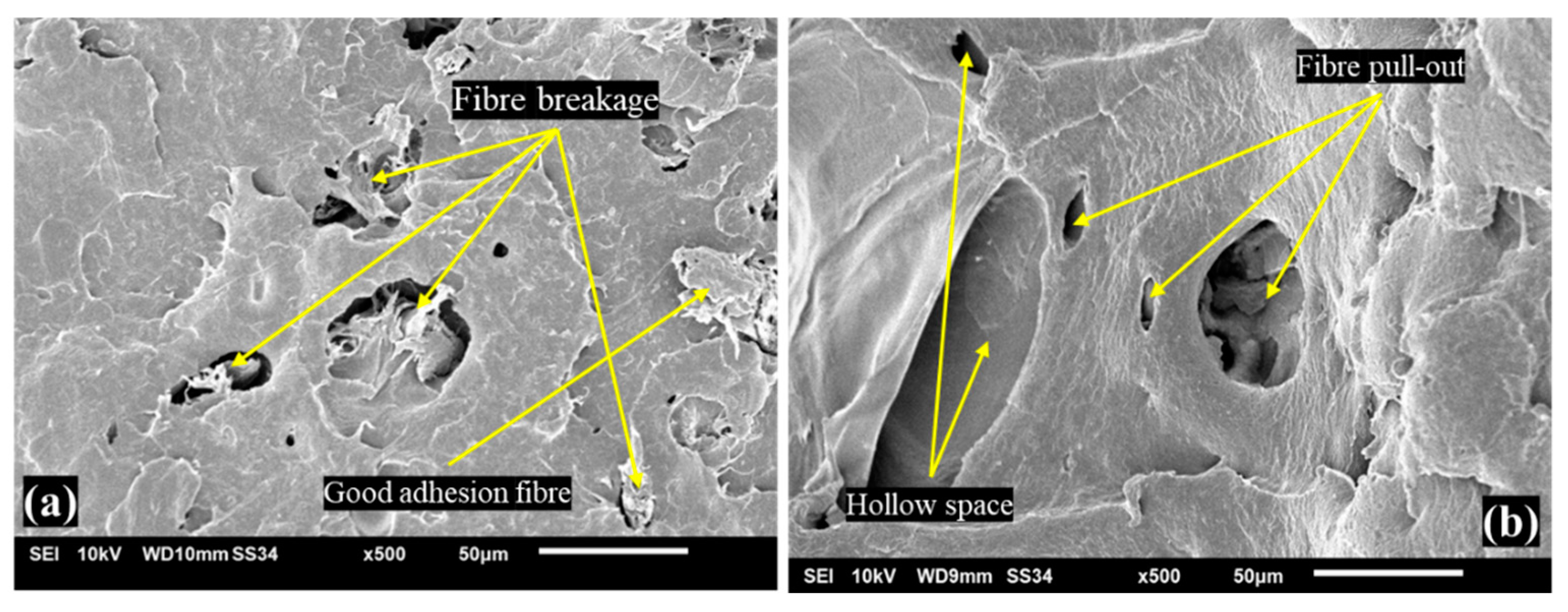

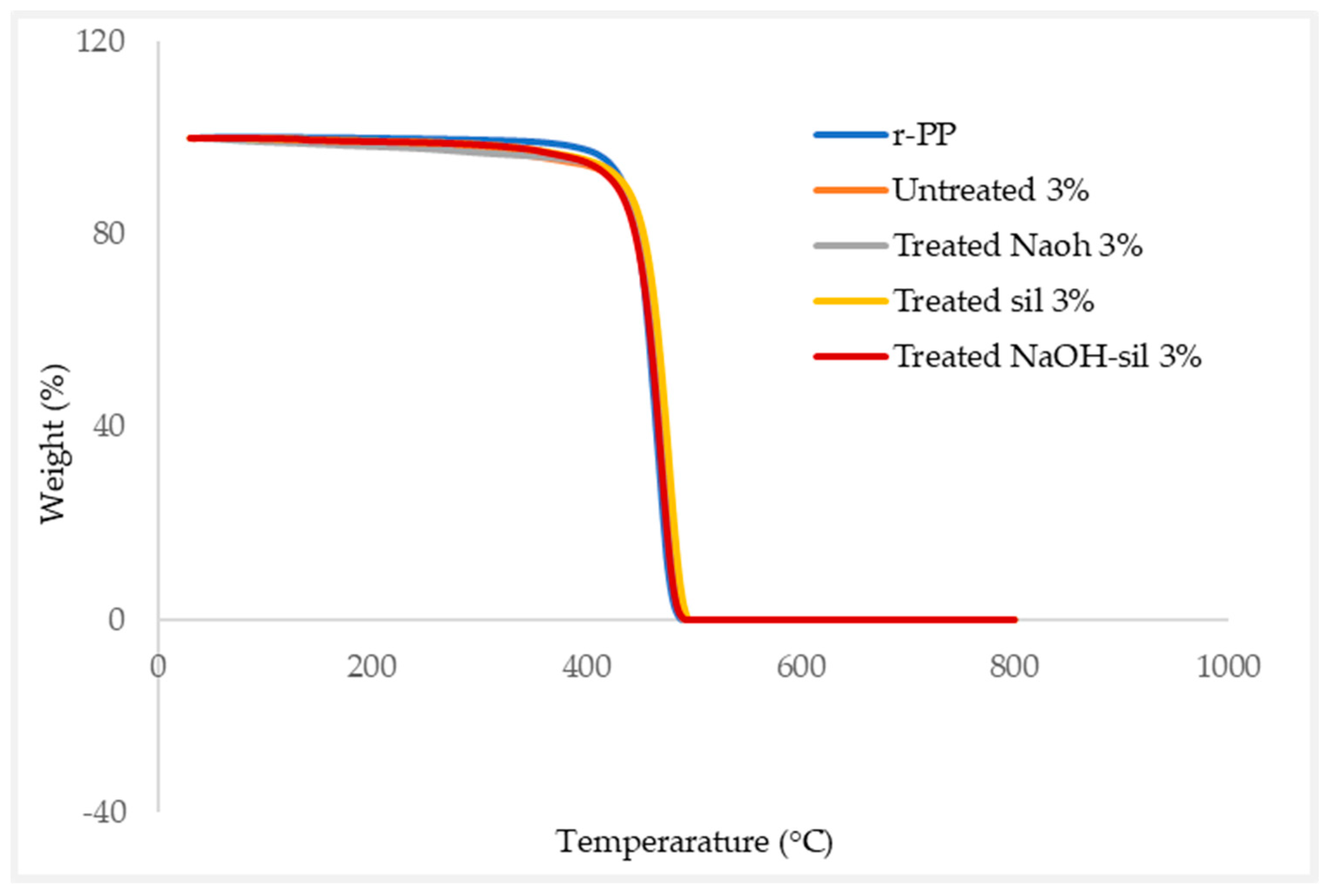
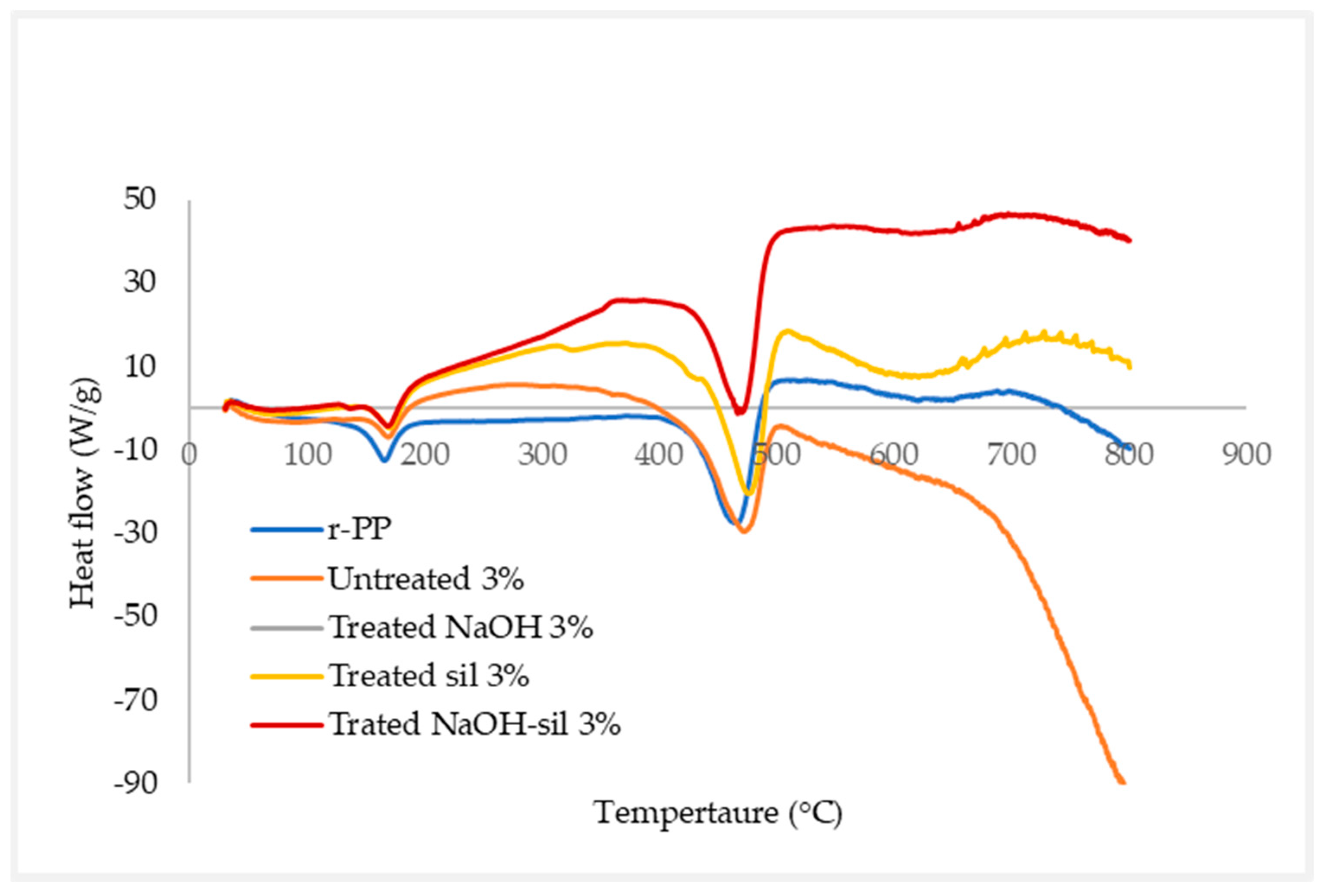
| Fibre | Tensile Strength (MPa) | Young’s Modulus (GPa) | Elongation at Break (%) | Density (g/cm3) |
|---|---|---|---|---|
| Hard Wood | 84.9 | - | 51.75 | 1.5 |
| Soft Wood | - | 11.2 | 38.5 | 1.22 |
| Sugar Palm | 15.5–290 | 0.5–3.37 | 5.7–28.0 | 1.29 |
| Kenaf | 930 | 53 | 1.6 | 1.45 |
| Banana | 529–914 | 27–32 | 5.9 | 1.35 |
| Pineapple | 413–1627 | 60–82 | 14.5 | 1.44 |
| Coir (coconut husk) | 220 | 6 | 1.5–2.5 | 1.25 |
| Bamboo | 290 | 17 | - | 1.25 |
| Bagasse | 350 | 22 | 5.8 | 0.89 |
| Flax Sunflowers | 800–1500 | 60–80 | 1.2–1.6 | 1.4 |
| Natural Fibre | Polymer Matrix | Findings | Ref. |
|---|---|---|---|
| Wood fibre | Epoxy resin | Alkaline treatment was chosen and obtains better tensile strength and has a better thermal stability test on composites | [35] |
| Kenaf fibre | PLA | Silane treatment with 2 wt% was used and has tensile strength, and the modulus moves higher compared to untreated fibre composite filament | [36] |
| Sugar palm fibre | PLA | Employing NaOH-silane treatment results in increased melt flow index and excellent bio composite filament | [37] |
| Roselle fibre | Vinyl ester | Increased fibre composite tensile strength might well be obtained by silane treatment | [38] |
| Wood fibre | PLA | Silane treatment was used and resulted in a bio-composite filament with better tensile strength compared to untreated version | [39] |
| Wood fibre | PP | The 5 wt% silane treatment was used, and the flexural result was greater than the NaOH treatment composite | [40] |
| Filament Composite | Weight of Fibre (g) 3.0% | Weight of Matrix (g) 97.0% | Weight of Composites (g) |
| Recycled PP (r-PP) | - | - | 800 |
| Untreated (3/UT) | 24 | 776 | 800 |
| NaOH (3/NO) | 24 | 776 | 800 |
| Silane (3/SI) | 24 | 776 | 800 |
| NaOH-silane (3/NS) | 24 | 776 | 800 |
| Plastic Type | Barrel Temperature (°C) |
|---|---|
| Recycled PP | 160–200 |
| Nozzle Extrusion Temperature (°C) | Filament Size (mm) |
|---|---|
| 160 | 2.20–2.60 mm |
| 170 | 1.80–2.00 mm |
| 180 | 1.70–1.75 mm |
| 190 | 1.65–1.75 mm |
| 200 | 1.55–1.65 mm |
| Filament Type | Pulley Speed (rpm) | Filament Extrusion Time (s/m) |
|---|---|---|
| r-PP | 10 | 6 s/m |
| 3/UT | 8.8 | 13 s/m |
| 3/NO | 8.4 | 15 s/m |
| 3/SI | 7.9 | 18 s/m |
| 3/NS | 7.1 | 23 s/m |
| Sample Code | Density of Filament (g/cm3) | Water Absorption Test (%) |
|---|---|---|
| r-PP | 0.85 | 9 |
| 3/UT | 0.82 | 18 |
| 3/NO | 0.86 | 10 |
| 3/SI | 0.99 | 8 |
| 3/NS | 1.01 | 7 |
| 3/UT | 3/NO | 3/SI | 3/NS | |
|---|---|---|---|---|
| Cellulose C5H8O4 | 3330 | 3334 | 3336 | 3331 |
| Absorption of H2O C=O | 1592 | 1591 | 1592 | 1593 |
| Hydroxyl Group -OH Si-C Stretching Bond | 3400–3200 | 3400–3200 | 3400–3200 | 3400–3200 |
| -Si-O-Si- Asymmetric Stretching | 1030 | 1027 | 1029 | 1028 |
| Hemicellulose CH | 2914 | 2911 | 2901 | 2901 |
| Silane (silanol group) -Si-OH | - | - | 897 | 895 |
| Materials Code | Degradation Temperature (°C) | Decomposition Temperature (°C) | Residue Temperature (°C) | Final Weight after Decomposition (%) |
|---|---|---|---|---|
| r-PP | 330.16 | 475.93 | 499.52 | 0.03 |
| 3/UT | 36.98 | 472.77 | 794.19 | 0.63 |
| 3/NO | 71.20 | 471.37 | 798.55 | 0.98 |
| 3/SI | 36.76 | 471.63 | 800.19 | 0.53 |
| 3/NS | 136.17 | 467.64 | 803.97 | 0.22 |
| Materials | Glass Transition Temperature, Tg (°C) | Melting Temperature, Tm (°C) |
|---|---|---|
| r-PP | 167.77 | 470.29 |
| 3/UT | 169.22 | 471.13 |
| 3/NO | 171.89 | 470.70 |
| 3/SI | 169.84 | 475.12 |
| 3/NS | 169.70 | 472.80 |
Disclaimer/Publisher’s Note: The statements, opinions and data contained in all publications are solely those of the individual author(s) and contributor(s) and not of MDPI and/or the editor(s). MDPI and/or the editor(s) disclaim responsibility for any injury to people or property resulting from any ideas, methods, instructions or products referred to in the content. |
© 2023 by the authors. Licensee MDPI, Basel, Switzerland. This article is an open access article distributed under the terms and conditions of the Creative Commons Attribution (CC BY) license (https://creativecommons.org/licenses/by/4.0/).
Share and Cite
Nafis, Z.A.S.; Nuzaimah, M.; Kudus, S.I.A.; Yusuf, Y.; Ilyas, R.A.; Knight, V.F.; Norrrahim, M.N.F. Effect of Wood Dust Fibre Treatments Reinforcement on the Properties of Recycled Polypropylene Composite (r-WoPPC) Filament for Fused Deposition Modelling (FDM). Materials 2023, 16, 479. https://doi.org/10.3390/ma16020479
Nafis ZAS, Nuzaimah M, Kudus SIA, Yusuf Y, Ilyas RA, Knight VF, Norrrahim MNF. Effect of Wood Dust Fibre Treatments Reinforcement on the Properties of Recycled Polypropylene Composite (r-WoPPC) Filament for Fused Deposition Modelling (FDM). Materials. 2023; 16(2):479. https://doi.org/10.3390/ma16020479
Chicago/Turabian StyleNafis, Z. A. S., M. Nuzaimah, S. I. Abdul Kudus, Y. Yusuf, R. A. Ilyas, V. F. Knight, and M. N. F. Norrrahim. 2023. "Effect of Wood Dust Fibre Treatments Reinforcement on the Properties of Recycled Polypropylene Composite (r-WoPPC) Filament for Fused Deposition Modelling (FDM)" Materials 16, no. 2: 479. https://doi.org/10.3390/ma16020479
APA StyleNafis, Z. A. S., Nuzaimah, M., Kudus, S. I. A., Yusuf, Y., Ilyas, R. A., Knight, V. F., & Norrrahim, M. N. F. (2023). Effect of Wood Dust Fibre Treatments Reinforcement on the Properties of Recycled Polypropylene Composite (r-WoPPC) Filament for Fused Deposition Modelling (FDM). Materials, 16(2), 479. https://doi.org/10.3390/ma16020479







